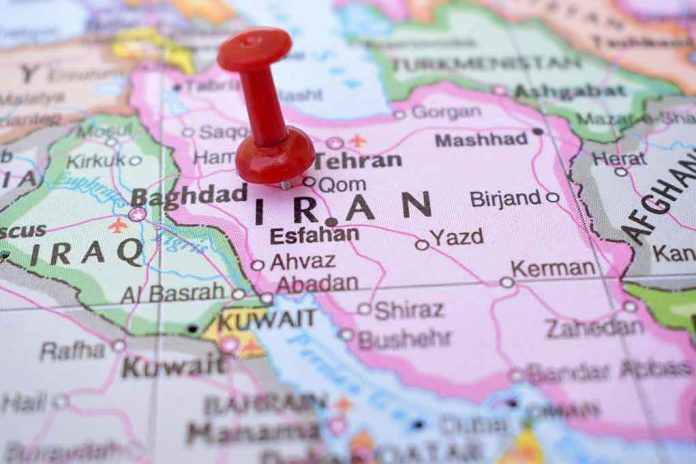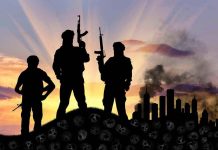
Khamenei’s sudden reemergence after weeks hiding in a bunker while his country burned begs a question every American should be asking: Who really runs Iran when the top dog vanishes in the middle of a war?
At a Glance
- Iran’s supreme leader Ali Khamenei broke his silence with a public appearance after weeks hiding during the brief but brutal Israel-Iran conflict.
- Iran’s prized nuclear program lies in ruins after devastating U.S. and Israeli strikes, but the regime’s appetite for atomic mischief remains undiminished.
- Khamenei’s absence fueled rumors of regime chaos and succession battles; his return is a calculated attempt to project strength, not proof of real control.
- The Iranian people face more hardship, while the global risk of renewed conflict and nuclear proliferation climbs.
Khamenei Crawls Out of Hiding as Iran Reels
Iran’s supreme leader Ali Khamenei finally ventured out in public on July 5, 2025, after spending the entire 12-day Israel-Iran war and its chaotic aftermath holed up in a bunker. He attended an Ashura ceremony but offered no public statement. The regime staged this appearance to squelch speculation about his health and grip on power, but the fact remains: When the missiles flew and the nuclear plants exploded, Iran’s so-called “supreme” leader was nowhere to be seen. If that’s not a snapshot of regime confidence, what is?
During the conflict, Khamenei’s disappearance was so complete that even regime loyalists whispered about a possible coup or succession crisis. His only communication came in the form of a pre-recorded message after a cease-fire, in which he claimed—without evidence—that Iranian missiles struck a U.S. air base in Qatar. U.S. and Israeli sources, and satellite images, show not a single missile hit its mark. The supreme leader’s strategy: go silent while the nation bleeds and then pop out for a photo op when the shooting stops.
U.S. and Israeli Strikes Shatter Iran’s Nuclear Dream—For Now
Iran’s nuclear program, the regime’s pride and joy, took a pounding during the war. U.S. and Israeli strikes left key sites at Fordow, Isfahan, and Natanz in ruins. The regime itself admits the damage is serious. Yet, in classic fashion, experts warn Iran is far from giving up on its nuclear ambitions. Instead, the regime will likely double down, repairing and rebuilding in the shadows, while using diplomatic games to buy time for the next round of dangerous brinkmanship. The loss of top military commanders and nuclear scientists further exposes just how brittle the regime’s infrastructure really is.
This war was no isolated flare-up. Iran’s nuclear ambitions have triggered one international crisis after another for decades. From the Stuxnet cyberattack to assassinated scientists, preemptive Israeli strikes on Syria and Iraq, and now this: the regime’s pursuit of the bomb keeps dragging the world to the edge of disaster. If you ever wondered why the U.S. and Israel refuse to trust Tehran, just look at the smoking craters where its “peaceful” nuclear facilities used to be.
A Regime Shaken—But Dangerous as Ever
Khamenei’s bunker routine and belated reappearance have fueled speculation about the regime’s stability. Was he sick? Was the IRGC—his power base—fighting among itself? Rumors of a looming succession crisis swirled in Tehran. With his first public appearance, the regime hopes to project an image of control. In reality, the regime’s authority has never looked shakier, and the Iranian public knows it. The war and its aftermath have only deepened the misery of ordinary Iranians, who face economic hardship, insecurity, and the prospect of another round of sanctions or conflict.
For the world, the danger is far from over. Every step Iran takes to rebuild its nuclear program increases the risk of a new, even deadlier war. Regional tensions remain sky-high, especially with Israel and the Gulf states, while American policymakers fret about another nuclear crisis on the horizon. The regime’s willingness to risk everything for its nuclear ambitions—and to lie about the results—should be a wake-up call. If anyone thinks Khamenei’s “leadership” guarantees stability, they haven’t been paying attention.
Sources:
What’s in the 2025 Reconciliation Bill So Far?
CBP’s Primary Mission Areas in 2025 – IDGA
Securing Our Borders – The White House





